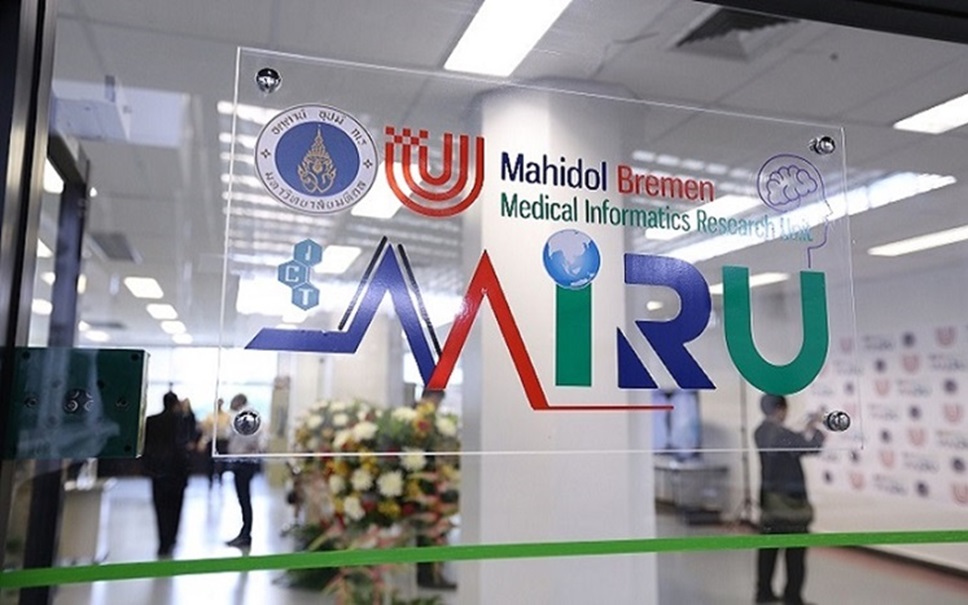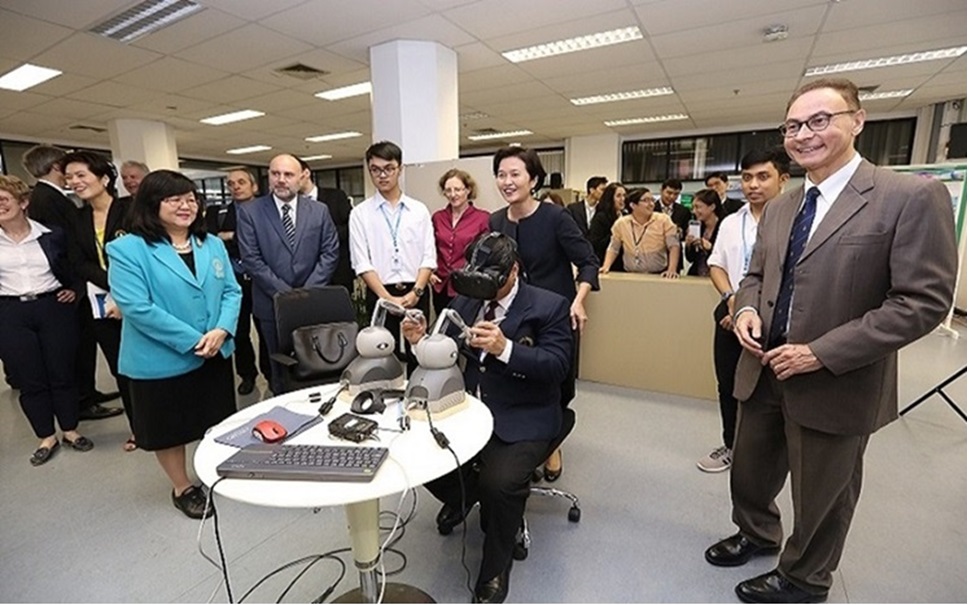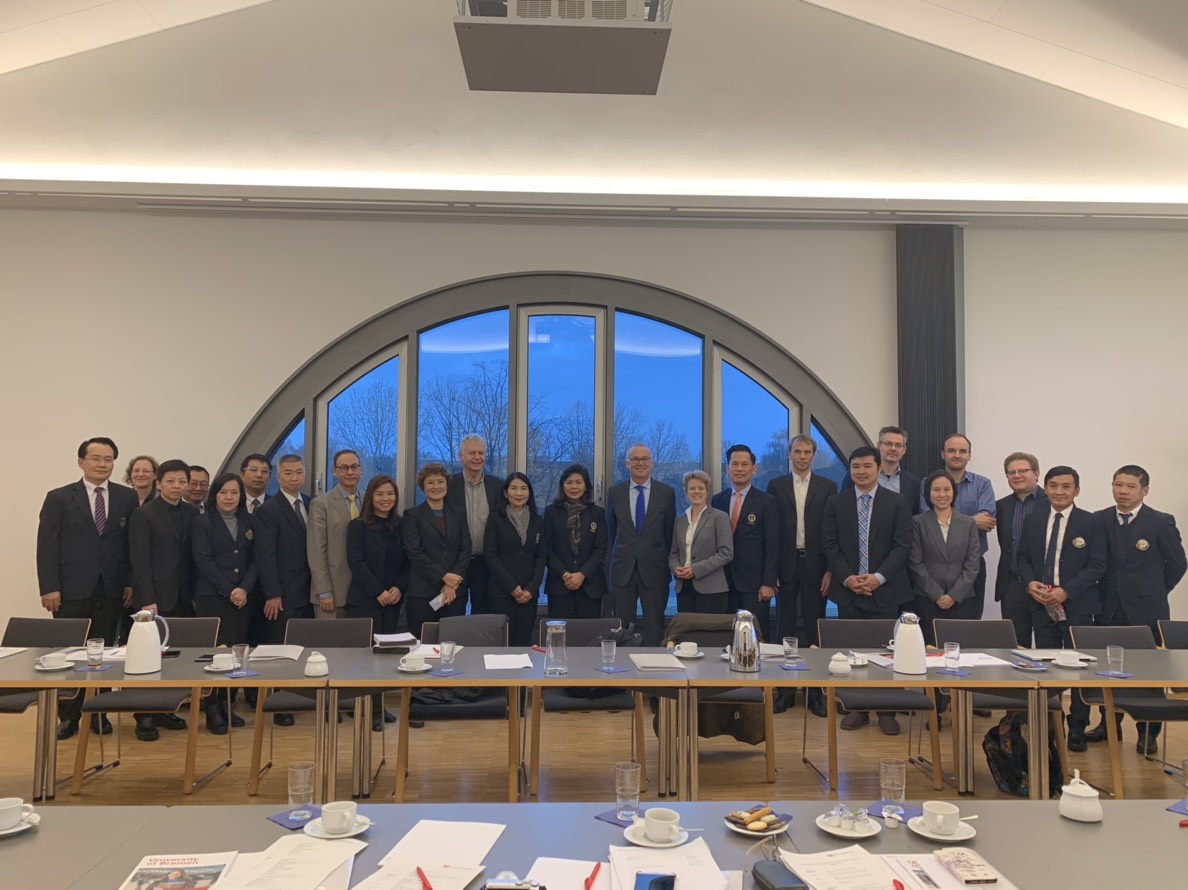MIRU's projects Large-Scale detailed mapping of dengue vector breeding sites from geo-tagged images and Understanding the Role of Human Mobility in Malaria Transmission on Mahidol World
Large-Scale detailed mapping of dengue vector breeding sites from geo-tagged images appears, targeted environmental and ecosystem management remain crucial in control of dengue. However, providing detailed environmental information on a large scale to effectively target dengue control efforts remains a challenge. An important piece of such information is the extent of the presence of potential dengue vector breeding sites, which consist primarily of open containers such as ceramic jars, buckets, old tires, and flowerpots. In this project we have implemented a pipeline to detect outdoor open containers which constitute potential dengue vector breeding sites from geotagged images and to create highly detailed container density maps at unprecedented scale. The research team have implemented the approach using Google Street View images which have the advantage of broad coverage and of often being two to three years old which allows correlation analyses of container counts against historical data from manual surveys. Our initial implementation detects containers comprising eight of the most common breeding sites in the images using convolutional neural network transfer learning. Over a test set of images the object recognition algorithm has an accuracy of 0.91 in terms of F-score. Container density counts are generated and displayed on a decision support dashboard. Analyses of the approach have been carried out over three provinces in Thailand. For the impact, the container counts obtained agree well with container counts from available manual surveys. Multi-variate linear regression relating densities of the eight container types to larval survey data shows good prediction of larval index values with an R-squared of 0.674.
Understanding the Role of Human Mobility in Malaria Transmission
Understanding the Role of Human Mobility in Malaria Transmission In low transmission settings, it is believed that human migration plays a major role in malaria transmission and even in emergence of drug resistance. Malaria infections may show up in low incidence areas because people become infected during time spent in high risk areas. In the case of northern Thailand, mobility may be due to normal daily patterns, labor migration, and seeking of refuge. It is known that a significant factor in malaria transmission in Thailand along the border with Myanmar is due to cross border migration, largely due to seeking of labor. While attempts have been made to understand movement patterns through systematic interviews, answers depend on subject’s memory and thus the data may not be accurate and precise. In addition, the approach is too labor intensive to practically collect data from large groups. A more precise approach is to use a GPS device to collect mobility data. This provides not only locations visited but also precise durations spent and time of day, which is important in mosquito biting behavior. By developed a smartphone app to track users’ location at regular intervals. Since some rural locations do not have 3G coverage, the app is designed so that it can store location information and transmit once the phone as a 3G or wifi connection. Other requirements are that it conumes as little power as possible and retains data even if the phone is switched off. The app has been installed in the phones of approximately 200 of the participants in the SEA-ICEMR study in Tak province, with location data being gathered every hour over the course of one year. An ID on the phone will link the data to the subject’s health record. Analytical software will be developed to understand the relation between mobility patterns and malaria infection. This will ultimately assist in establishing more effective malaria control strategies.
YouTube | Mahidol World Facebook | http://www.facebook.com/mahidolchannel
Mahidol University มหาวิทยาลัยมหิดล | https://www.mahidol.ac.th/th
Website | http://www.mahidolchannel.com | https://channel.mahidol.ac.th/
Faculty of ICT, Mahidol University | https://www.ict.mahidol.ac.th/
Mahidol-Bremen Medical Informatics Research Unit | https://miru.ict.mahidol.ac.th/





 As part of the annual Joint International Tropical Medicine Meeting (
As part of the annual Joint International Tropical Medicine Meeting (